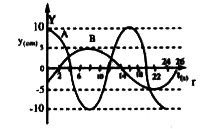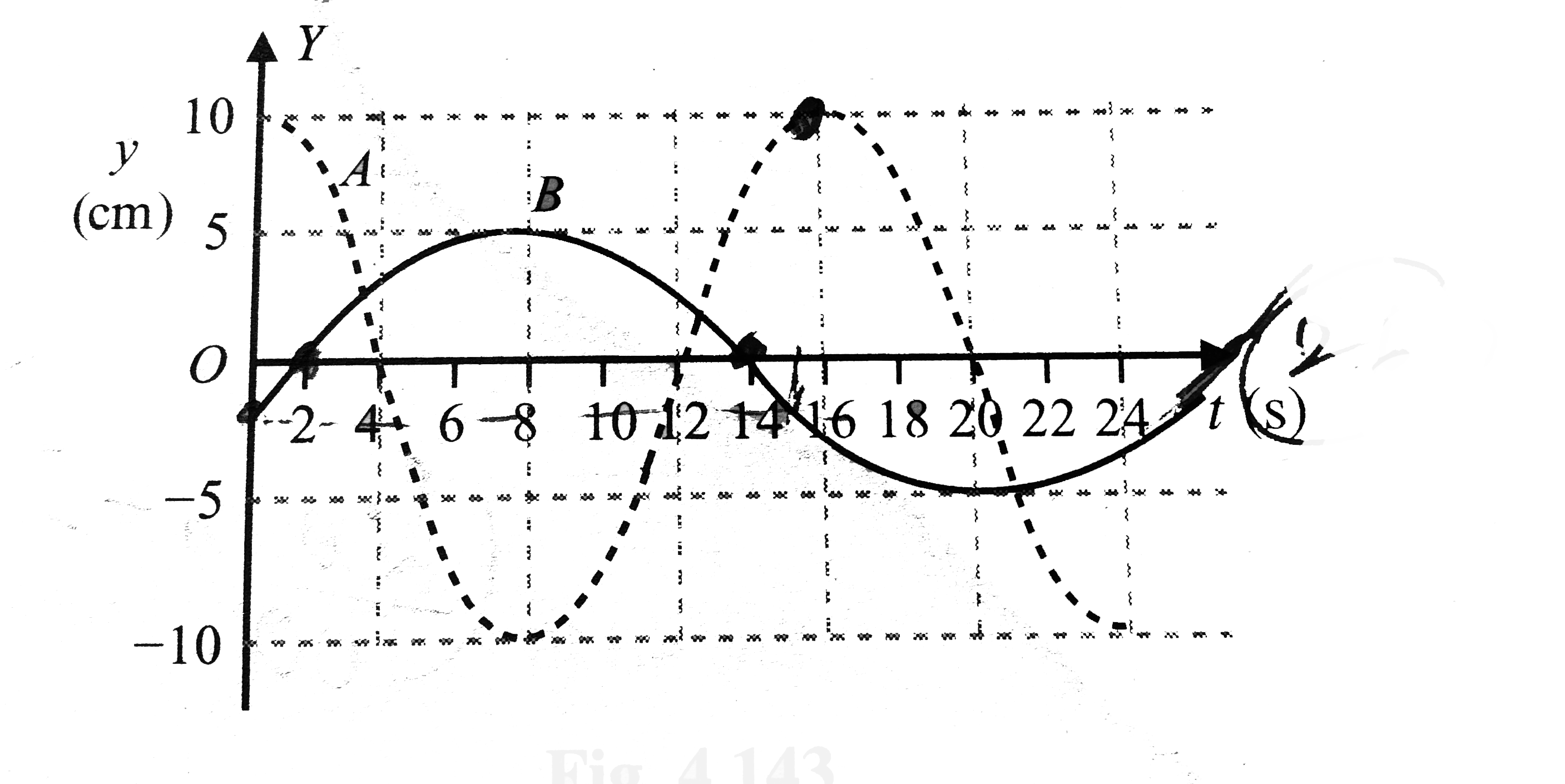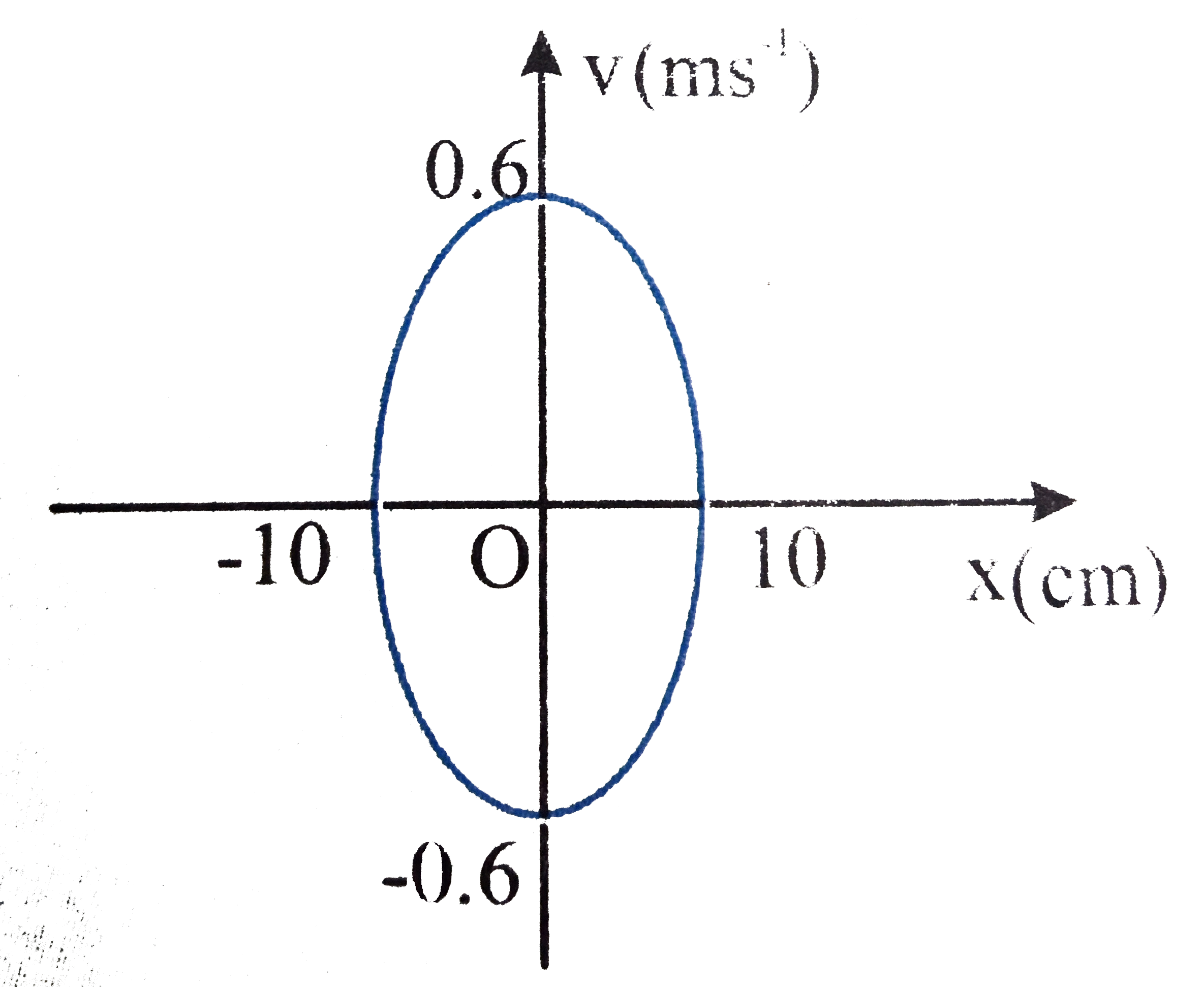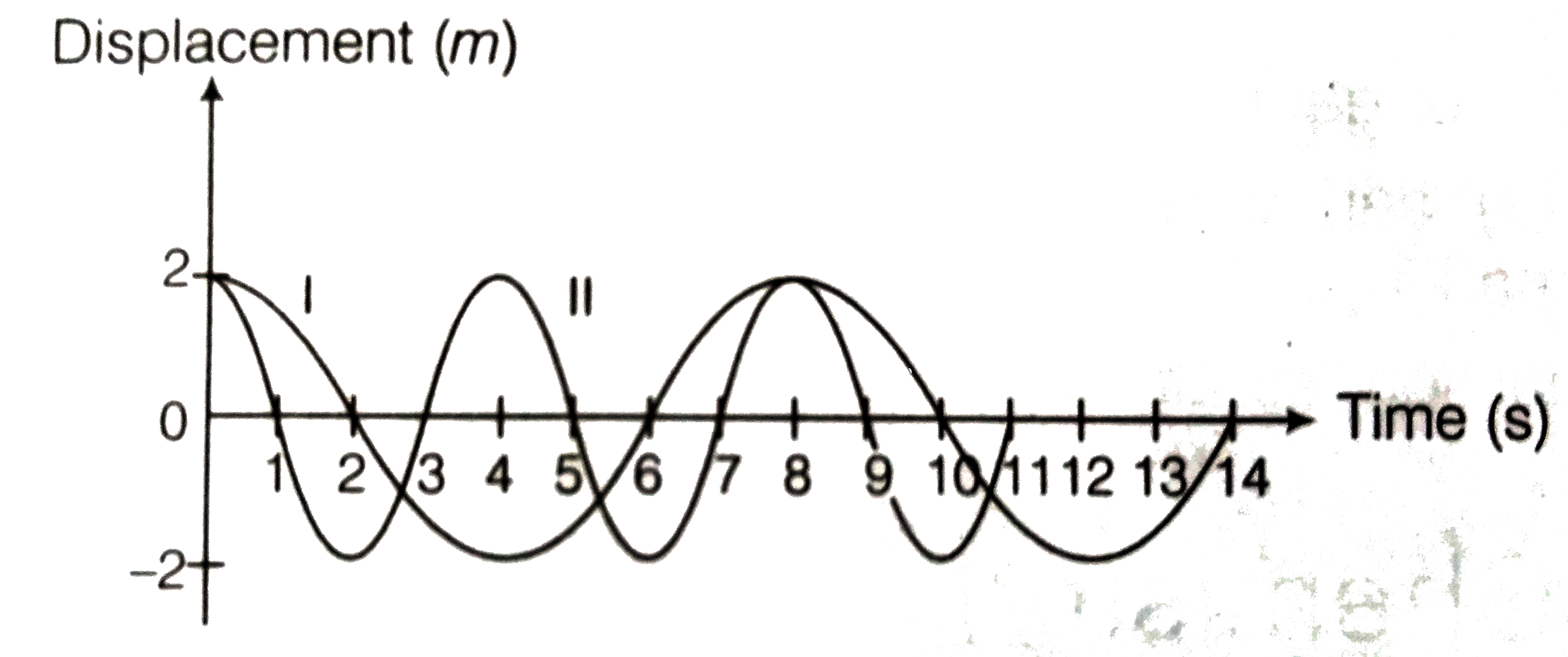Figure given below shows the displacement versus time graph for two particles A and B executing simple harmonic motions. Find the ratio of their maximum velocities,

For A time period TA=16s [Distance between two adjacent crest]
for B time period TB=(26−2)=24s
[length between the crest and through shown =20s−8s=12s]
Also amplitudes aA=10cm,aB=5cm
Ratio fo maximum velocities
VAVB=aAωAaBωB=aATBaBTA=10×245×16=31
Topper's Solved these Questions
- BOOK - AAKASH SERIESCHAPTER - OSCILLATIONSEXERCISE - EXERCISE I184videos
OSCILLATIONS
- BOOK - AAKASH SERIESCHAPTER - OSCILLATIONSEXERCISE - EXERCISE II175videos
OSCILLATIONS
- BOOK - AAKASH SERIESCHAPTER - OSCILLATIONSEXERCISE - EXERCISE-349videos
OSCILLATIONS
- BOOK - AAKASH SERIESCHAPTER - OSCILLATIONEXERCISE - QUESTIONS FOR DESCRIPTIVE ANSWERS12videos
OSCILLATION
- BOOK - AAKASH SERIESCHAPTER - PHYSICAL WORLDEXERCISE - VERY SHORT ANSWER TYPE QUESTIONS5videos
PHYSICAL WORLD
Similar Questions

The following figure shows the displacement versus time graph for two particles A and B executing simple harmonic motions. The ratio of their maximum velocities isView SolutionThe following figure shows displacement versus time curve for a particle executing simple harmonic motion :

Which one of the following statements is correct?View Solution
Knowledge Check
- Question 1 - Select One

The following figure shows the displacement versus time graph for two particles A and B executing simple harmonic motions. The ratio of their maximum velocities isA3:1B1:3C1:9D9:1 - Question 2 - Select One
The velocity of a particle executing simple harmonic motion is
Aω2√A2+x2Bω√A2−x2Cω√A2+x2Dω2√A2−x2 - Question 3 - Select One
If a particle is executing simple harmonic motion, then acceleration of particle
Ais uniformBvaries linearly with timeCis non uniformDBoth (2) & (3)
Figure shows the graph of velocity versus displacement of a partciel executing simple harmonic motion. Find the period of oscillation of the particle.
 View Solution
View SolutionFigure shows the displacement time graphs of two simple harmonic motions I and II. From the graph it follows that
 View Solution
View SolutionThe displacement-time graph for two particles is as shown. Find the ratio of their velocities.
View SolutionFigure shows the displacement-time graphs of two simple harmonic motions I and II. From the graph it follows that
 View Solution
View SolutionThe acceleration-displacement graph of a particle executing simple harmonic motion is shown in the figure. The frequency of oscillation is
 View Solution
View Solution

